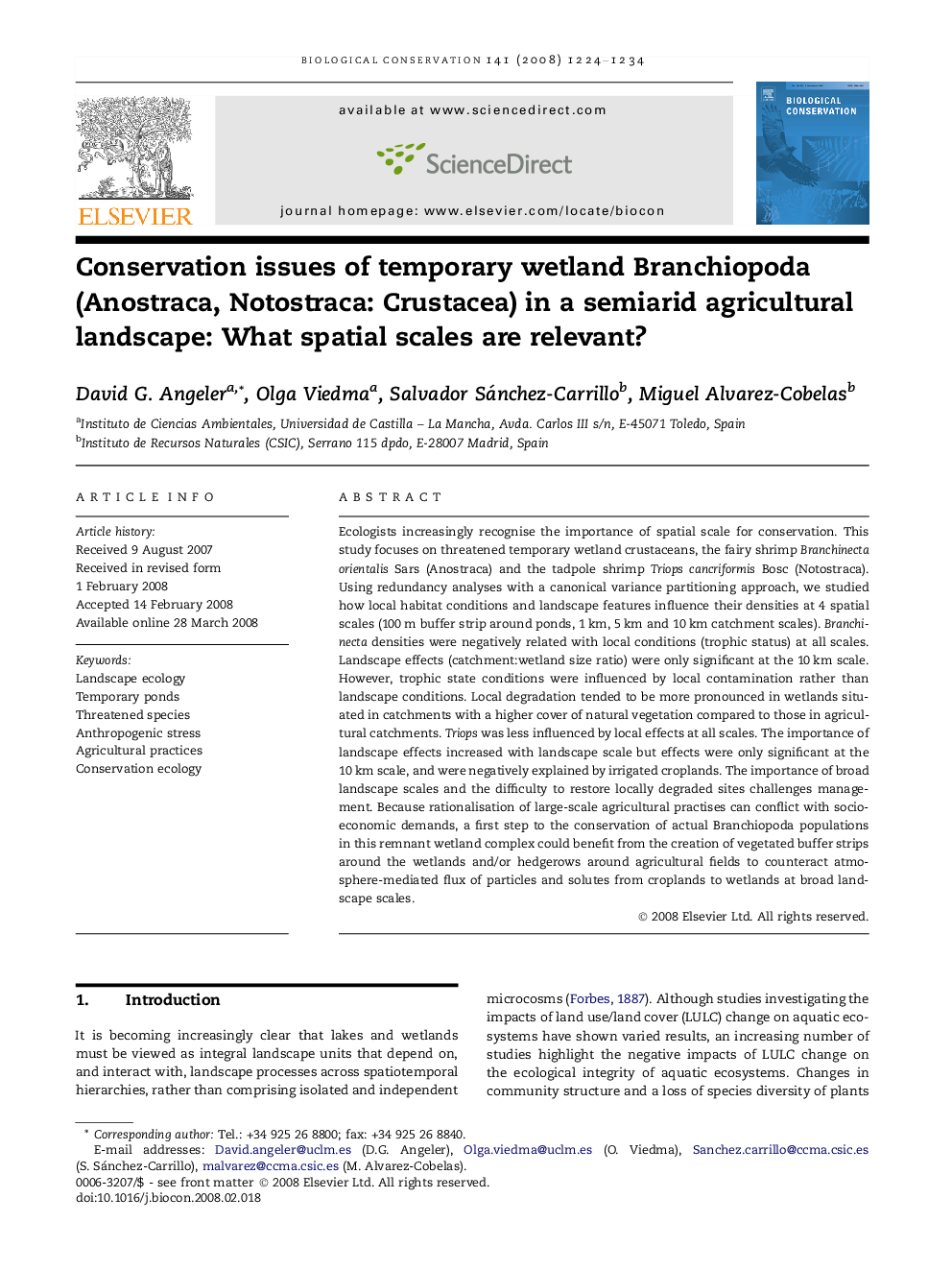| Article ID | Journal | Published Year | Pages | File Type |
|---|---|---|---|---|
| 4386946 | Biological Conservation | 2008 | 11 Pages |
Abstract
Ecologists increasingly recognise the importance of spatial scale for conservation. This study focuses on threatened temporary wetland crustaceans, the fairy shrimp Branchinecta orientalis Sars (Anostraca) and the tadpole shrimp Triops cancriformis Bosc (Notostraca). Using redundancy analyses with a canonical variance partitioning approach, we studied how local habitat conditions and landscape features influence their densities at 4 spatial scales (100Â m buffer strip around ponds, 1Â km, 5Â km and 10Â km catchment scales). Branchinecta densities were negatively related with local conditions (trophic status) at all scales. Landscape effects (catchment:wetland size ratio) were only significant at the 10Â km scale. However, trophic state conditions were influenced by local contamination rather than landscape conditions. Local degradation tended to be more pronounced in wetlands situated in catchments with a higher cover of natural vegetation compared to those in agricultural catchments. Triops was less influenced by local effects at all scales. The importance of landscape effects increased with landscape scale but effects were only significant at the 10Â km scale, and were negatively explained by irrigated croplands. The importance of broad landscape scales and the difficulty to restore locally degraded sites challenges management. Because rationalisation of large-scale agricultural practises can conflict with socioeconomic demands, a first step to the conservation of actual Branchiopoda populations in this remnant wetland complex could benefit from the creation of vegetated buffer strips around the wetlands and/or hedgerows around agricultural fields to counteract atmosphere-mediated flux of particles and solutes from croplands to wetlands at broad landscape scales.
Keywords
Related Topics
Life Sciences
Agricultural and Biological Sciences
Ecology, Evolution, Behavior and Systematics
Authors
David G. Angeler, Olga Viedma, Salvador Sánchez-Carrillo, Miguel Alvarez-Cobelas,
